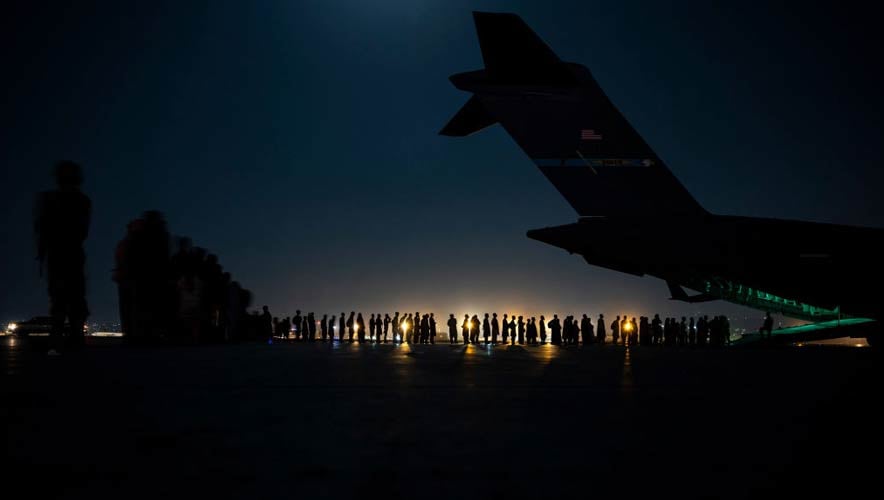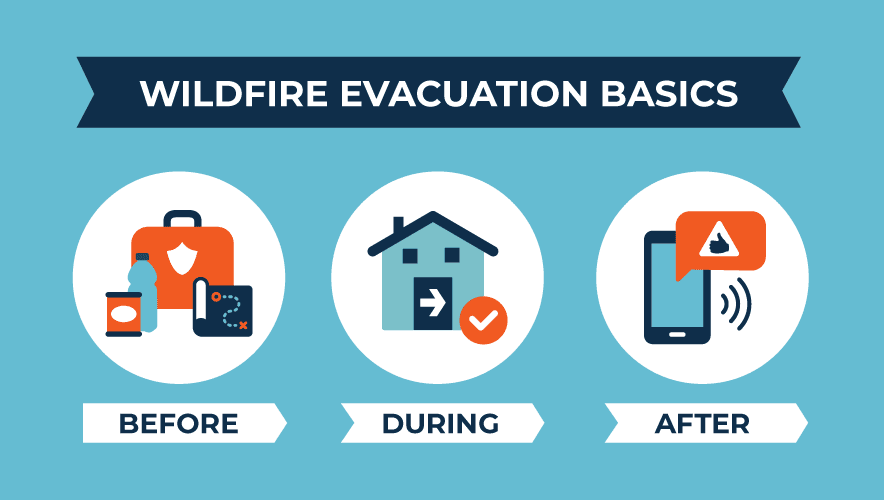A Moving Target: How Organizations Can Plan for Emergency Evacuations
Tensions were high in Juba, South Sudan, on 8 July 2016. The night before, fighting broke out between opposing army factions in the city, killing five South Sudanese soldiers. The incident was eerily similar to the shooting that led to a civil war in December 2013 that tentatively ceased in 2015.
President Salva Kiir Mayardit and First Vice President Riek Machar were meeting that Friday night in July to discuss the violence of the day before and reassure the public. But the evening, like they so often do, did not go according to plan. Gunfire soon erupted outside of the president’s compound and a United Nations’ base sheltering civilians. More than 300 people would be killed before the weekend was over, despite a ceasefire on Saturday to celebrate five years of South Sudanese independence.
For organizations operating in Juba, an extreme-risk location, many only had essential staff on the ground. But given the violence and the potential for it to spread—posing a real risk to their teams—action needed to be taken to evacuate them.
This is when teams like Julian Moro’s step in. Moro is global director of security assistance at health and security services firm International SOS, where he formally served as regional security director for the Middle East and North-East Africa (MENEA) region. Their client was sheltering in place, per procedure, that weekend in Juba and for part of the week afterward because the roads were not safe for travel and the airport was closed. They had received reports of people shot at and ambushed if they attempted to leave Juba to drive into Uganda, Moro says.
“It went from things are okay but tense to one incident of heavy weapons, machine guns, and then widespread fighting throughout the city,” he adds.
Ahead of the one-year anniversary of the February 2022 Russian invasion of Ukraine, Security Management spoke with Moro about mass evacuation planning. And how the work done to assist individuals leaving high-risk situations in places like Juba prepared Moro and his team to handle the evacuation challenges of today.
The Lead-Up
Unlike an individual evacuation—often conducted because a person experienced a medical emergency while on work or personal travel to a location that’s not their home—mass evacuations require significant resources to move many people from one location to a designated safe haven. These evacuations are done when a natural disaster strikes, such as the recent earthquakes in Turkey; when military conflict begins, such as the Russian invasion of Ukraine; or when civil unrest breaks out.
Companies can plan these procedures themselves, but many turn to security providers that specialize in evacuations because they have the resources and connections to secure the required assets—like plane tickets, visa assistance, or drivers—that independent organizations lack.
For instance, between January 2022 and June 2023, International SOS teams will be conducting 45 country visits to update all of their concept of operations for mass evacuations. The teams will meet with and re-credential air providers; reassess the atmospherics in that country to see if they have changed since the last visit; and re-up service retainers with providers in places that are forecasted to be more volatile in the coming 12 months, Moro says.
They will then take this information to craft out a range of plans of action and options that include data from the security team, a medical team, and a logistics team. These plans may include travel routes and transportation options for fleeing a country, accommodation in a designated safe zone, and then travel on to a final destination of the client’s choice.
Meanwhile, Moro explains that clients are encouraged to take their own preparation measures for an evacuation—as well as focus on prevention to limit situations where a full-scale evacuation is necessary.
In a country that is preparing for a contentious presidential election, for instance, clients would receive intelligence alerts and reports, plus weekly and monthly forecasts outlining the changing risk landscape and steps they should take. These actions could include refreshing business continuity and crisis management plans, and walking teams through preparedness steps.
“Making sure you have the ability to stand fast for a particularly protracted period of time—that you have those resources, access to a generator, fuel, and money,” Moro adds. “And have you got an evacuation plan? Has that evacuation plan been updated? Has it been tested? Is your crisis management team aware of X, Y, and Z?”
Another core aspect to review—especially given high employee turnover during the past several years—is whether the people listed in the crisis management plan are still with the company and are aware of their roles and responsibilities.
“And do those individuals have the appropriate financial delegation and authority to be able to make the decisions to evacuate hundreds of people with the cost that comes with that, which can run into the many hundreds of thousands of dollars?” Moro adds.
In South Sudan, for example, International SOS worked to evacuate clients in 2014 shortly after a major escalation in violence. Many of those same clients wanted to return to South Sudan in 2016, despite the country jumping from being a high-risk country to an extreme-risk country. These clients were mostly non-governmental organizations working to provide aid to the South Sudanese people or were contractors for oil and gas firms.
High Security Risk Country |
Extreme Security Risk Country |
|
Protests are frequently violent and may target or disrupt foreigners; they may be exacerbated by governance issues, including security or law and order capacity. Violent crime and terrorism pose significant direct or incidental risks to travelers and foreigners may be directly targeted. Certain parts of the country are inaccessible or off-limits to the traveler. |
Government control and law and order may be minimal or non-existent across large areas. Serious threat of violent attacks by armed groups targeting travelers and international assignees. Government and transport services are barely functional. Large parts of the country are inaccessible to foreigners. |
Source: International SOS Risk Rating Definitions
To ensure they were prepared, International SOS sent three team members into Juba in early 2016 to assess its providers’ preparedness, ensure its credentials remained valid, that they had a comfortable working relationship, and that visas to work and be in South Sudan were in order. This last factor was especially resource intensive—creating a rolling visa process so each month three different International SOS staff members had a visa to allow them to be in country and working.
“We invested about $6,000 a year in rolling visas because after each month, the three people that were on the previous month were not allowed to receive a letter of invitation for the following month,” Moro explains.
The company also tracked the security situation in South Sudan using an evacuation monitor level, which is used to advise clients in the country about the level of preparedness they need to have. When clients returned to South Sudan in 2016, they were operating on the second-highest level of the monitor—only essential staff was allowed in country.
Initial Motions
As gunfire erupted in Juba in early July 2016, organizations were operating under a stand-fast posture, with enough water, food, power, and money to shelter in place for at least seven days.
International SOS, meanwhile, was working with providers to conduct group reconnaissance to find where security checkpoints had been set up throughout the city, who was manning those checkpoints, and the risks involved with leaving the stand-fast location. It was fielding calls from clients—approximately 80 requests—for assistance for evacuation from Juba. And the company also received a tip that the airport would reopen on 12 July to resume operations.
With this information and the data from the reconnaissance efforts, Moro says they began building out evacuation plans for clients. Part of this process involved communicating with brokers about clients’ needs—such as 15 seats on a plane to leave on 12 July—who would then provide an option for clients to accept or turn down within a designated time period, sometimes within as little as two hours.
They were unable to grasp that opportunity when it was presented, and therefore they missed that window.
But then some clients were unable to make a decision internally about how to move forward, Moro says.
“This was the most frequent cause of people being delayed instead of being out after a few days in those first couple of planes,” Moro explains. “They were unable to grasp that opportunity when it was presented, and therefore they missed that window.”
He adds that this is not because a security practitioner is not prepared to make a decision, but could be an organizational structure issue where someone does not have the authority to agree to the evacuation’s next steps.
“The reality is that you can have as many contingency plans as you like. You can have a plan for every possible contingency in health, safety, security, and environment, but if your organization isn’t well structured to make decisions, it’ll be far less successful,” Moro says. “If you’ve got loads of plans, but low levels of crisis management capability, you are far less likely to be successful than if you’ve got no plans at all but a really good crisis management capability where the organization is structured to be able to make decisions quickly, and people are empowered both from a responsibility and accountability perspective, with financial delegation to be able to pull the trigger.”
This predicament was prevalent in the South Sudan evacuations, which meant delays where the physical risks of harm—such as compounds being breached and staff being impacted—were very high.
Evacuation Now
One client in South Sudan was an oil and gas organization, which employed a significant number of people from the same home country spread across a sizeable area of South Sudan. Initially, the company of approximately 70 people—many of whom were in Juba in July 2016—was in a stand-fast position while preparing to evacuate. Those employees outside of Juba were slowly moved into the city to consolidate their presence before the next step: getting to the airport.
“It was such a large population that our teams on the ground had armored Land Cruisers to move them,” Moro says. “But we could only move at certain times, with a certain number of people, so we put in place a plan to make a significant journey from the compound to the airport.”
The airport itself was small, just a few rooms, and not designed for people to spend a great deal of time in—unlike other major international airports. Because of this, the team on the ground worked to have a correspondent at the airport itself to receive the evacuees, double-check that their names on the flight manifest were correct, and help them get onto their plane that would take them to the designated safe haven location, the United Arab Emirates (UAE), before a final transport to their home nation.
Most of the evacuees arrived at the airport on time and without issue. One group, however, was delayed when its transport vehicles were stopped at a checkpoint that had not been there earlier in the day.
“That added quite a lot of delay, and now there was the risk associated with being stuck at a checkpoint,” Moro says. “These are the risks that you have to factor in when you’re doing your plan of action and communication. We were advised quickly, and reacted with our grand transport team. They were able to send someone relatively senior there, a well-connected local national, to eventually get them through the checkpoint into the airport.”
Once everyone was on the airplane, there was another delay. The group sat for a few hours on the tarmac because the flight kept being deprioritized for takeoff to allow inbound and outbound government aircraft to use the runways. The airport was only operational during daylight hours, so there were concerns that the evacuees’ flight would not be able to take off that day.
This was the moment when the team on the ground once again relied on its contingency planning, Moro says, moving a fleet of vehicles into place at the airport in case all the evacuees needed to get off the plane and be transported back to their compound that evening.
In the end, however, the flight got clearance to take off and fly to the UAE—the last commercial flight to leave that day. A reception team then met the flight in Dubai, helped evacuees obtain visas to be in the country, provided flight tickets to two of the evacuees continuing to a separate destination, and provided support services for overnight accommodations before another flight to the rest of the evacuees’ home country.
Throughout the ordeal, there was a lot of hurry up and wait—which can create additional anxiety for people amidst a high-stress situation. In those moments, Moro says it’s important to communicate and also manage your own stress levels.
“How do you help reduce anxiety and keep people calm?” he asks. “Having a good plan that has got a lot of contingency, that has so far run very smoothly, has been able to accommodate some hiccups like when some of their team were stopped at a checkpoint, and successfully navigating that, that’s reassuring.”
Applying Lessons Learned
After evacuating teams out of Juba, International SOS has worked to conduct a variety of mass evacuations, including out of Libya, Tripoli, and most recently Ukraine after Russian troops invaded one year ago.
While the 2016 evacuations out of Juba were conducted after a sudden uptick in violence, the evacuations out of Ukraine were the result of a long escalation in the threat level that began in 2014 with the annexation of Crimea and continued conflict in the Donetsk.
International SOS had been conducting regular threat forecasting for the region and in December 2021, it said that tensions between Russia and Ukraine were important to keep an eye on. It escalated the threat level in January 2022, recommending clients increase their own preparedness levels.
“We then deployed a team into Ukraine which visited nine cities to make sure that we had met with our providers, recredentialed them, confirmed that they had capability, and that they knew who we are,” says Moro, adding that this was especially important because the company’s ability to visit countries to conduct these assessments on the ground had been impacted during the COVID-19 pandemic.
At the same time, Moro explains they worked to ensure partners in Ukraine’s neighbors—Poland and Romania—were highly prepared and ground transportation teams were set up to assist should they be needed. This looked likely after 11 February 2022, Moro recalls, when U.S. President Joe Biden urged Americans to leave Ukraine after the United States briefed its allies that Russia was likely to launch an invasion before the end of the Beijing Winter Olympics. The British and American consulates also announced they were ordering all essential staff to depart Kyiv and relocate to Lviv.
Moro says International SOS senior security advisors corroborated with consulate staff that the order was given because staff needed to leave—not just out of an abundance of caution. They then consulted with aviation and maritime teams who were concerned that Ukrainian airspace would close, and employees on its operations teams who said they were put on a shorter notice to move. With all those factors combined, Moro said the decision was made to change International SOS’s evacuation level to full evacuation—removing all people from Ukraine.
“That was a good 12 days before the conflict escalated with Russian troops entering into Ukraine, giving clients a real head start,” Moro says. “Not all of them took it. Many did.”
Many clients—like regular civilians—left Ukraine via bus, train, or personal vehicle. Moro says the company did not run these evacuations, but it would provide advice to clients about how to leave the area. For instance, a client planned to self-evacuate using a convoy of 24 white Land Cruisers that would move together in the same direction.
“We advised them that that looks exactly like civilian vehicles doing a military convoy and if that was seen—with mobile phone signals, even (satellite) phone signals—and you’ve got them all moving in a long line to a particular destination, that could be mistaken as a military convoy and become a target,” Moro adds. “So, we were able to give them practical advice about how they should approach that differently.”
The need to evacuate people via land made evacuations out of Ukraine particularly challenging because land evacuations are fraught with risk. A fire or gunfire could break out, a vehicle could have a mechanical failure, communication could be lost, or someone could have a medical emergency. Many evacuees out of Ukraine, for instance, were elderly members of staff or family members of staff that had significant health issues.
One time in Kyiv, for example, an evacuation team arrived to pick up an individual only to discover the person was blind with serious issues with equilibrium and balance, and the person also had a caregiver with them.
“The plan of action changed. It had to be redrawn up and a new plan created on the fly for two nights of different accommodations on the route from Kyiv to Lviv, and then on to the border because they couldn’t go for any more than a few hours at a time,” Moro says. “Of course, they couldn’t travel at night—there were curfews in place for good reason. If you did find yourself trying to travel at night, you would potentially be shot at by Ukrainian forces.”
The evacuation was ultimately successful and included a significant step of coordinating with a medical director to have an ambulance waiting in the area between Ukraine and Poland’s border posts—a no-man’s land area—because the individual could not walk between them, Moro adds.
A major lesson learned from experiences in Juba that was reflected in Ukraine was having mechanisms in place—as a company—to make internal decisions quickly. During land evacuations, especially, the security situation can change rapidly and clients need to be prepared to respond to the new circumstances without a significant delay.
For example, a client might be presented with an evacuation option and realize that the cost is going to exceed the financial authority the individual has. That person then might need to go up the chain to request permission for additional resources—such as to a chief financial officer located in a different part of the world and is unreachable due to a time zone difference or travel plan. Waiting for that higher-level approval could be the difference between being on the first transport out of the crisis and the fifth transport, Moro says.
This is why it’s critical for organizations to develop crisis management plans and contingencies, iterate multiple levels of financial authority, and practice the plan and communication path with all parties, he adds.
Ensure that these individuals know they’re listed on the plan and that when their phone rings, even in the middle of the night, they need to answer it.
“And if they do not, have a fallback plan,” Moro says. “Because it does come down at times to the difference between getting on that first plane out or being stuck for five or seven days in a place that is not a place where you want to be.”
If your organization isn’t well structured to make decisions, it’ll be far less successful.
After Juba and then the COVID-19 pandemic began, many companies have made strides in improving their business continuity and resilience capabilities. For instance, investing in technology and infrastructure that supports remote work and connections outside of the traditional office space.
This came into play especially in Ukraine when companies were making the choice of evacuating employees while also preserving business assets—such as financial data to comply with Ukrainian regulations—that could potentially fall into the wrong hands because the physical office space was abandoned. Embassies, for instance, have significant processes for securing or destroying data prior to leaving a facility.
Moro says they assisted some clients with the process of preparing for these situations, such as data destruction or planning for a potential return to the office site and resumption of business.
“It is a really important aspect for planning to operate in that type of country,” Moro explains about running a business in a conflict zone. “It might sound like it’s simple, but it’s not.”
One aspect that is now considered in all these operations is how to provide emotional or mental health support to clients and evacuees who have been exposed to traumatic events. For instance, International SOS is providing emotional support for clients who have workforces in Ukraine.
“It’s a piece that you need in place for your population, your entire population irrespective of whether they’ve been through a mass evacuation or war-like circumstances or being robbed or held at gunpoint,” Moro says. “Whether you are directly affected yourself, the circumstances put a lot of pressure on people.”
Most recently, the company has been having conversations with clients who are interested in returning to Ukraine. These discussions include how to return safely, when and where to go back, if the infrastructure is in place to allow them to return and work, and what might happen if personnel need to be evacuated again.
“There’s a huge amount of consideration in the aftermath of a mass evacuation, while not losing sight of the emotional aspects of people that have been through really significant fear, traumatic events, and anxiety and fear for your personal wellbeing,” Moro says.
Megan Gates is senior editor at Security Management. Connect with her at [email protected] or on LinkedIn. Follow her on Twitter: @mgngates.









